Theory and Modeling of Granular Matter
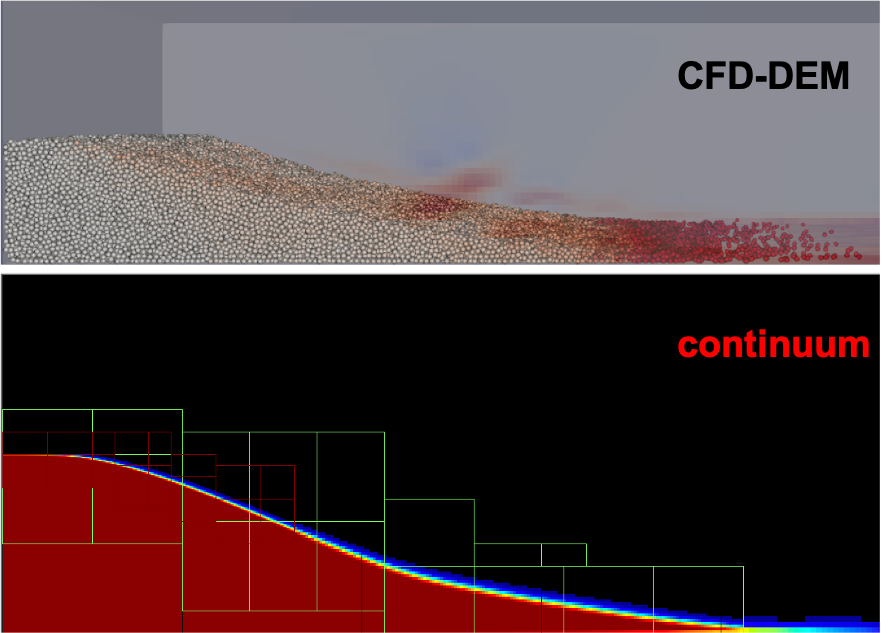
|
Granular matter is prevelant in nature and industry, being only the second most widely-used material in industry after water.
Their widespread occurence in nature ranges from soil to large-scale geophysical phenomena such as earthquakes and landslides,
whereas they are also ubiquitous in pharamceutical, additive manufacturing and various energy-based industries. The mechanics
of these materials is remarkably complex, and they can easily switch between solid-like, liquid-like and gas-like states.
Currently, there exists no universal continuum model to predict their behavior in generalized loading conditions. While DEM
simulations can accurately model granular matter, these methods are intractable at practical scales of interest.
CCSE researchers are engaged in developing advanced constitutive models for granular matter that can predict their response
in arbitrary geometries and loading conditions. The strategy involves using DEM simulations to calibrate higher-order tensorial
constitutive models that obey rotational and translational invariance, towards implementing these models in AMR-based
incompressible and low-Mach number continuum fluid solvers. The details of the constitutive model are decribed in
this paper and
this paper.
For more information, please contact
Ishan Srivastava.
|
Particle-Laden Multiphase Flows
The dynamics of a mixture of particles and fluid exhibits a wide array of complex phenomena such as clustering and segregation,
along with more exotic behavior such as shear thickening at large solid volume fractions. In collaboration with NETL, we are
developing models for such multiphase flows that have several applications of interest to the DOE, including an ongoing investigation
on modeling multiphase flows in bioreactors to achieve higher biomanufacturing efficiency (funded through the DOE's
HPC4EnergyInnovation program by the AMMTO, EERE and IDEO offices).
CCSE and NETL researchers have developed CFD-DEM and CFD-PIC based approaches for multiphase flow modeling within MFIX-Exa,
where the solid phase is represented either by soft-sphere DEM representation (high fidelity, but expensive), or a coarse-grained
PIC representation (lower fidelity, but scalable). Current developments include implementing complex interparticle DEM models with
adhesion that are relevant in biomanufacturing, and incorporating higher-fidelity solid-phase constitutive models within the PIC
represetation for such adhesive contacts. MFIX-Exa also has capabilities to model thermal transport and chemical reactions in multiphase
flows, allows for resolving complex geometries using embedded boundary methods, and provides AMR capabilities.
Details about MFIX-Exa have been described in this paper
and this paper.
For more information, please contact
Ishan Srivastava,
or Aaron Lattanzi,
or Bhargav Siddani.
Polydispersity in Multiphase Flows
In all but the most idealized conditions, multiphase flows exhibit significant polydispersity --- i.e., the particle characteristic size is described by a probability distribution
other than a delta function (monodisperse). However, polydispersity will reduce the efficiency of Lagrangian particle solvers and the effect becomes increasly worse as the particle size ratio grows.
More specifically, the construction of a neighbor list, for pair-wise interaction forces (collisions, etc.), must utilize a grid that is larger than the largest particle in the simulation.
Consequently, many small particles, which cannot physically collide, will be added to the neighbor list. The artificially inflated neighbor list requires more operations and memory but also
slows down the evolution of the particles' states since extra checks must be made when accumulating the net collisional force on a particle.
The effect of particle size distribution on computational efficiency may be readily observed for the simple case of granular diffusion of a bidisperse mixture. The particles are seeded in three
layers and given an initial granular temperature. As the simulation evolves, particles begin diffusing between one another and colliding. Compared to a monodisperse simulation with the same number
of particles, the default single-grid neighbor list algorithm exhibits significant slowdown (nearly 40X for large size ratios and particle counts). By contrast, a new multi-grid neighbor list
algorithm was implemented within AMReX (see Shire et al. (2021) for details) that yields significant speed up when compared
to the single-grid neighbor list algorithm.
For more information, please contact
Aaron Lattanzi,
Andrew Myers.
Non-Newtonian Fluid Mechanics
A defining feature of many complex fluids is the presence of a yield stress: for an insufficiently stressed material,
they behave like an elastic solid, but once the yield stress is exceeded, they flow like a fluid. This broad class of
fluids encompasses various materials of industrial and natural importance such as polymeric fluids, gels and viscoelastic
suspensions. Unlike Newtonian fluids, the constitutive behavior of these fluids is highly complex, and they display
intriguing phenomena such shear thickening, shear thinning, jamming, shear banding and normal stress differences.
Previous work from our group has demonstrated simulations of viscoplastic fluids using a highly parallelizable structured
adaptive mesh refinement method in AMReX-based code incflo.
Further developments included modeling solid boundaries in viscoplastic fluids using embedded boundary methods. See more
details in this paper and
this paper.
CCSE researchers are extending this framework by incorporating elastic effects through the implementation of
elastoviscoplastic (EVP) models. The robustness of the numerical implementation will be extensively tested in various
flow scenarios (such as Poiseuille and Couette flows) for a range Weissenberg and Bingham numbers. Another potential
avenue for development involves implementing immersed boundary methods (IBM) to model solid particle suspensions in such
complex non-Newtonian fluid matrix, which is an important precursor material for various DOE-relevant applications such as
battery electrode manufacturing.
For more information, please contact
Ishan Srivastava.
Data-Driven Modeling of Rheologically-Complex Microstructural Fluids
In contrast to Newtonian fluids, complex fluids containing suspended microstructure exhibit complicated non-Newtonian
rheology that is not well-described by a single governing equation. The macroscale dynamics of these materials is inherently
complicated since it emerges from the dynamical evolution of the underlying microstructure. As such, a predictive high-fidelity
modeling framework for complex fluids necessarily requires a multiscale approach where the microstructural evolution is upscaled
to the constitutive response at continuum scales of practical interest. Scientific machine learning methods are ideally suited for
enhancing such a multiscale approach by adaptively learning microstructural dynamics to predict the complex constitutive response
at the continuum, particularly when traditional modeling methods are often computationally intractable.
CCSE researchers are engaged in developing a multiscale modeling framework that explicitly couples particle-based and continuum
simulations of complex fluids via active learning, thus providing a new predictive capability for domain scientists to conduct
high-fidelity modeling of these materials at practical length scales.
For more information, please contact
Ishan Srivastava, Andy Nonaka, and Bhargav Siddani.
DISCOS: Discrete Ion Stochastic Continuum Overdamped Solvent
|
|
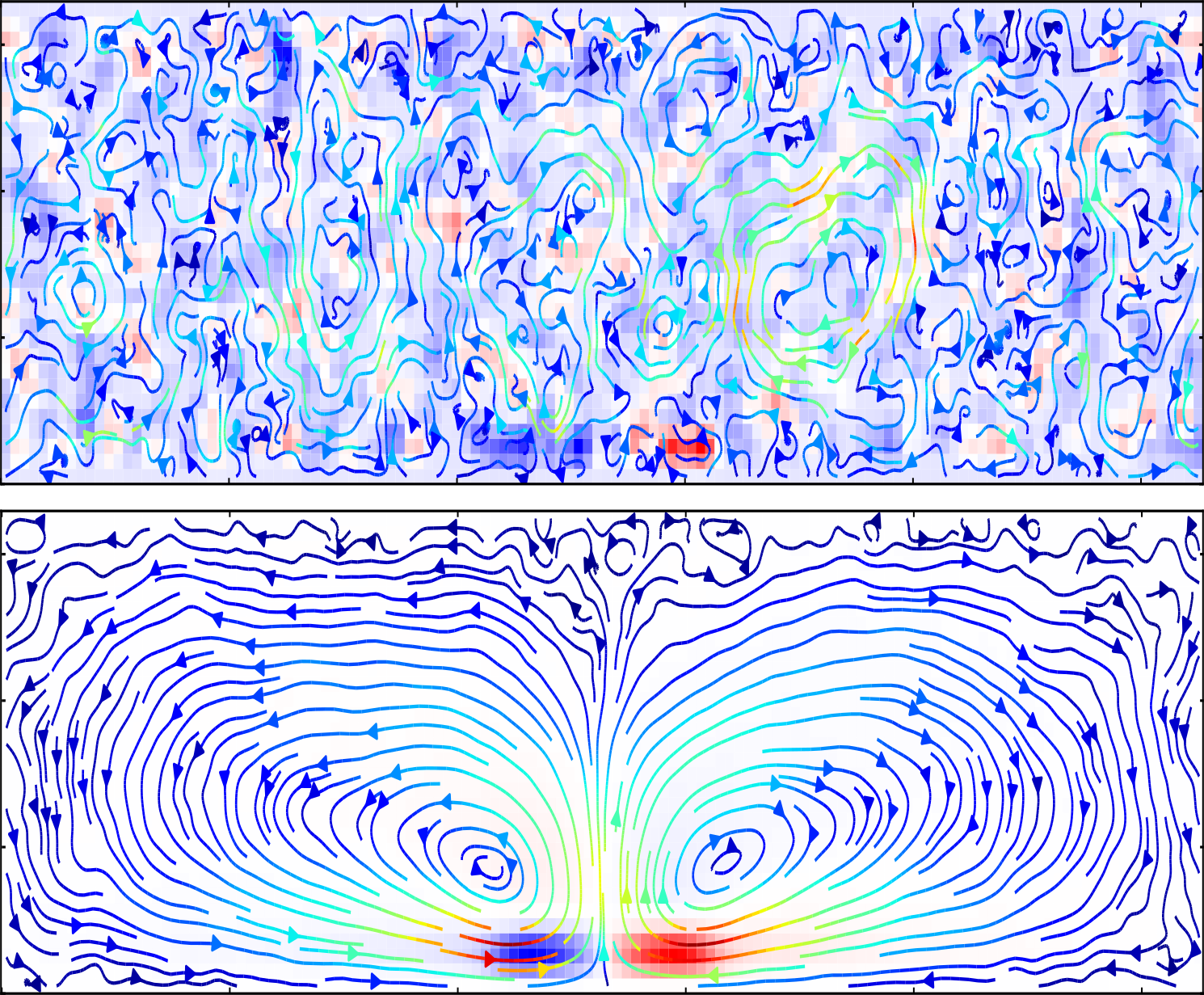
|
We have developed a methodology for the mesoscale simulation of strong electrolytes.
The methodology is an extension of the fluctuating immersed-boundary approach that treats a solute as discrete Lagrangian particles that interact with Eulerian hydrodynamic and electrostatic fields.
Hydrodynamic interactions are taken to be overdamped, with thermal noise incorporated using the fluctuating Stokes equation, including a "dry diffusion" Brownian motion to account for scales not resolved by the coarse-grained model of the solvent.
Long-range electrostatic interactions are computed by solving the Poisson equation, with short-range corrections included using an immersed-boundary variant of the classical particle-particle particle-mesh technique.
Also included is a short-range repulsive force based on the Weeks-Chandler-Andersen potential.
This methodology is validated by comparison to Debye-Huckel theory for ion-ion pair correlation functions, and Debye-Huckel-Onsager theory for conductivity, including the Wien effect for strong electric fields.
We refer to this approach as discrete ion stochastic continuum overdamped solvent (DISCOS).
The algorithm is described in detail in
this paper.
For more information, please contact
Andy Nonaka.
|
Room Temperature Ionic Liquids
|
We have developed a new mesoscale model for ionic liquids based on a low Mach number fluctuating hydrodynamics formulation for multicomponent charged species.
The low Mach number approach eliminates sound waves from the fully compressible equations leading to a computationally efficient incompressible formulation.
The model uses a Gibbs free energy functional that includes enthalpy of mixing, interfacial energy, and electrostatic contributions.
We have calibrated our model using parameters for [DMPI+][F6P-], an extensively-studied room temperature ionic liquid (RTIL), and have numerically demonstrated the formation of mesoscopic structuring at equilibrium in two and three dimensions.
In simulations with electrode boundaries, the measured double layer capacitance decreases with voltage, in agreement with theoretical predictions and experimental measurements for RTILs.
The results of our study are described in detail in
this paper.
For more information, please contact
John Bell and
Andy Nonaka.
|

|
Compressible Fluctuating Hydrodynamics for Transpiration of Gas Mixtures across Membranes
|
|

|
We have developed a methodology for mesoscale simulations of multicomponent gases based on a compressible fluctuating hydrodynamics (FHD) formulation. Both cell-centered and staggered discretizations of the stochastic PDEs are implemented in AMReX along with capabilities for GPU optimization. We are currently using this methodology to simulate transpiration of gas mixtures across nanoporous membranes with applications in gas separation technologies. We have implemented a Langevin model for fluctuating effusive fluxes of mass, momentum and energy across the membrane, along with reservoirs to impose a concentration gradient. The methodology is being validated against a discrete simulation Monte Carlo (DSMC) implementation of the gas mixture effusion. In previous work, we have simulated the effusion of a single component gas held at a nonequilibrium steady state by imposing a temperature gradient through isothermal walls using both DSMC and FHD, along with Master equation and Langevin models for effusion. Good agreement was observed between DSMC and FHD with the latter showing a significant advantage in computational speed. Furthermore, the principal effect of transpiration was found to be a suppression of long-ranged hydrodynamic correlations, an outcome largely explained by a reduction in the temperature gradient due to the membrane. The results of the study are described in detail in
this paper.
For more information, please contact
Ishan Srivastava
|
Coupling Fluctuating Hydrodynamics With Surface Chemistry
|
An increasing number of micro and nanoscale technologies rely on heterogeneous catalysis, where reacting chemical components can exist in both a gaseous phase and on adjoining solid surfaces.
To properly design such devices, it is critically important to understand chemistry on the solid interface as well as the transport of these components in the gas phase.
Furthermore, for the design of increasingly smaller technologically innovative devices, a correct description of thermal fluctuations in both phases is crucial.
We have developed a computationally efficient simulation methodology that can accurately describe both phases and their coupling.
To describe transport behavior in the bulk fluid region at small scales, we use a fluctuating hydrodynamics (FHD) approach, whereas a kinetic Monte Carlo (KMC) method is used to describe stochastic chemistry on the surface.
For more information, please contact
Changho Kim.
|
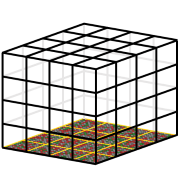
|
Publications
 H. T. Jung, H. Kim, A. L. Garcia, A. J. Nonaka, J. B. Bell, I. Srivastava, and C. Kim,
Thermodynamically Consistent Incorporation of the Langmuir Adsorption Model into Compressible Fluctuating Hydrodynamics,
submitted for publication, 2025.
[arXiv]
H. T. Jung, H. Kim, A. L. Garcia, A. J. Nonaka, J. B. Bell, I. Srivastava, and C. Kim,
Thermodynamically Consistent Incorporation of the Langmuir Adsorption Model into Compressible Fluctuating Hydrodynamics,
submitted for publication, 2025.
[arXiv]
 John B. Bell, Andrew Nonaka, and Alejandro L. Garcia
A Fluctuating Hydrodynamics Model for Nanoscale Surfactant-laden Interfaces,
J. Chem. Phys.,, 163, 18, 2025.
[link]
John B. Bell, Andrew Nonaka, and Alejandro L. Garcia
A Fluctuating Hydrodynamics Model for Nanoscale Surfactant-laden Interfaces,
J. Chem. Phys.,, 163, 18, 2025.
[link]
 R. M. McMullen, M. A. Gallis, I. Srivastava, A. J. Nonaka, J. B. Bell, A. L. Garcia,
Comment on "Physical Significance of Artificial Numerical Noise in Direct Numerical Simulation of Turbulence",
arXiv, 2025.
[arXiv]
R. M. McMullen, M. A. Gallis, I. Srivastava, A. J. Nonaka, J. B. Bell, A. L. Garcia,
Comment on "Physical Significance of Artificial Numerical Noise in Direct Numerical Simulation of Turbulence",
arXiv, 2025.
[arXiv]
 B. Siddani, W. Zhang, A. J. Nonaka, J. B. Bell, I. Srivastava,
An Adaptive, Data-Driven Multiscale Approach for Dense Granular Flows,
Computer Methods in Applied Mechanics and Engineering, 446, 118294, 2025.
[doi]
B. Siddani, W. Zhang, A. J. Nonaka, J. B. Bell, I. Srivastava,
An Adaptive, Data-Driven Multiscale Approach for Dense Granular Flows,
Computer Methods in Applied Mechanics and Engineering, 446, 118294, 2025.
[doi]
 I. Srivastava, A. J. Nonaka, W. Zhang, A. L. Garcia, and J. B. Bell,
Molecular Fluctuations Inhibit Intermittency in Compressible Turbulence,
Journal of Fluid Mechanics, 1022, 2025.
[link]
I. Srivastava, A. J. Nonaka, W. Zhang, A. L. Garcia, and J. B. Bell,
Molecular Fluctuations Inhibit Intermittency in Compressible Turbulence,
Journal of Fluid Mechanics, 1022, 2025.
[link]
 J. B. Bell, A. Nonaka, and A. L. Garcia,
Comment on "Brownian motion of droplets induced by thermal noise",
Physical Review E, 111, 056201, 2025.
[link]
J. B. Bell, A. Nonaka, and A. L. Garcia,
Comment on "Brownian motion of droplets induced by thermal noise",
Physical Review E, 111, 056201, 2025.
[link]
 M. Polimeno, C. Kim, F. Blanchette, I. Srivastava, A. Garcia, A. Nonaka, and J. Bell,
Thermodynamic consistency and fluctuations in mesoscopic stochastic simulations of reactive gas mixtures,
J. Chem. Phys., 162, 15, 2025.
[link]
M. Polimeno, C. Kim, F. Blanchette, I. Srivastava, A. Garcia, A. Nonaka, and J. Bell,
Thermodynamic consistency and fluctuations in mesoscopic stochastic simulations of reactive gas mixtures,
J. Chem. Phys., 162, 15, 2025.
[link]
 J. B. Bell, A. Nonaka, and A. L. Garcia,
Spherical and sessile droplet dynamics by fluctuating hydrodynamics,
Physics of Fluids, 37, 012024, 2025.
[link]
J. B. Bell, A. Nonaka, and A. L. Garcia,
Spherical and sessile droplet dynamics by fluctuating hydrodynamics,
Physics of Fluids, 37, 012024, 2025.
[link]
 A. L. Garcia, J. B. Bell, A. Nonaka, I. Srivastava, D. Ladiges, C. Kim,
An Introduction to Computational Fluctuating Hydrodynamics,
2024.
[arxiv]
A. L. Garcia, J. B. Bell, A. Nonaka, I. Srivastava, D. Ladiges, C. Kim,
An Introduction to Computational Fluctuating Hydrodynamics,
2024.
[arxiv]
 J. Galen Wang, Daniel R. Ladiges, Ishan Srivastava, Sean P. Carney, Andy J. Nonaka, Alejandro L. Garcia, John B. Bell,
Steric effects in induced-charge electro-osmosis for strong electric fields,
Physical Review Fluids, 8, 083702, 2023.
[arxiv]
[doi]
J. Galen Wang, Daniel R. Ladiges, Ishan Srivastava, Sean P. Carney, Andy J. Nonaka, Alejandro L. Garcia, John B. Bell,
Steric effects in induced-charge electro-osmosis for strong electric fields,
Physical Review Fluids, 8, 083702, 2023.
[arxiv]
[doi]
 I. Srivastava, D. R. Ladiges, A. Nonaka, A. L. Garcia, J. B. Bell,
Staggered Scheme for the Compressible Fluctuating Hydrodynamics of Multispecies Fluid Mixtures,
Physical Review E, 107, 015305, 2023.
[arxiv]
[doi]
I. Srivastava, D. R. Ladiges, A. Nonaka, A. L. Garcia, J. B. Bell,
Staggered Scheme for the Compressible Fluctuating Hydrodynamics of Multispecies Fluid Mixtures,
Physical Review E, 107, 015305, 2023.
[arxiv]
[doi]
 D. R. Ladiges, J. G. Wang, I. Srivastava, S. P. Carney, A. Nonaka, A. L. Garcia, A. Donev and J. B. Bell,
Modeling Electrokinetic Flows with the Discrete Ion Stochastic Continuum Overdamped Solvent Algorithm,
Physical Review E, 106, 035104, 2022.
[doi]
D. R. Ladiges, J. G. Wang, I. Srivastava, S. P. Carney, A. Nonaka, A. L. Garcia, A. Donev and J. B. Bell,
Modeling Electrokinetic Flows with the Discrete Ion Stochastic Continuum Overdamped Solvent Algorithm,
Physical Review E, 106, 035104, 2022.
[doi]
 Robin J Dolleman, Debadi Chakraborty, Daniel R Ladiges, Herre SJ van der Zant, John E Sader, and Peter G Steeneken,
Squeeze-film effect on atomically thin resonators in the high-pressure limit,
Nano Letters, 2021.
[doi]
Robin J Dolleman, Debadi Chakraborty, Daniel R Ladiges, Herre SJ van der Zant, John E Sader, and Peter G Steeneken,
Squeeze-film effect on atomically thin resonators in the high-pressure limit,
Nano Letters, 2021.
[doi]
 D. R. Ladiges, S. P. Carney, A. Nonaka, K. Kymko, G. C. Moore, A. L. Garcia, S. R. Natesh, A. Donev and J. B. Bell,
A Discrete Ion Stochastic Continuum Overdamped Solvent Algorithm for Modeling Electrolytes,
Physical Review Fluids, 6(4), 044309, 2021.
[arxiv]
D. R. Ladiges, S. P. Carney, A. Nonaka, K. Kymko, G. C. Moore, A. L. Garcia, S. R. Natesh, A. Donev and J. B. Bell,
A Discrete Ion Stochastic Continuum Overdamped Solvent Algorithm for Modeling Electrolytes,
Physical Review Fluids, 6(4), 044309, 2021.
[arxiv]
 K. Klymko, S. P. Carney, A. Nonaka, A. L. Garcia, and J. B. Bell,
A Low Mach Number Fluctuating Hydrodynamics Model For Ionic Liquids,
Phys. Rev. Fluids, 5, 9, 2020.
[arxiv]
K. Klymko, S. P. Carney, A. Nonaka, A. L. Garcia, and J. B. Bell,
A Low Mach Number Fluctuating Hydrodynamics Model For Ionic Liquids,
Phys. Rev. Fluids, 5, 9, 2020.
[arxiv]
 Nicholas Z. Liu, Daniel R. Ladiges, Jason Nassios, and John E. Sader, Acoustic flows in a slightly rarefied gas,
Physical Review Fluids, 5(4), 043401, 2019.
[doi]
Nicholas Z. Liu, Daniel R. Ladiges, Jason Nassios, and John E. Sader, Acoustic flows in a slightly rarefied gas,
Physical Review Fluids, 5(4), 043401, 2019.
[doi]
 Yong Shi, Daniel. R. Ladiges, and John E. Sader,
Origin of spurious oscillations in lattice Boltzmann simulations of oscillatory noncontinuum gas flows,
Physical Review E, 100(5), 053317, 2019.
[doi]
Yong Shi, Daniel. R. Ladiges, and John E. Sader,
Origin of spurious oscillations in lattice Boltzmann simulations of oscillatory noncontinuum gas flows,
Physical Review E, 100(5), 053317, 2019.
[doi]
 D. R. Ladiges, A. J. Nonaka, J. B. Bell, and A. L. Garcia,
"On the Suppression and Distortion of Non-Equilibrium Fluctuations by Transpiration,"
Phys. Fluids, 149, 052002, 2019.
[doi]
D. R. Ladiges, A. J. Nonaka, J. B. Bell, and A. L. Garcia,
"On the Suppression and Distortion of Non-Equilibrium Fluctuations by Transpiration,"
Phys. Fluids, 149, 052002, 2019.
[doi]
 A. Donev, A. J. Nonaka, C. Kim, A. L. Garcia and J. B. Bell,
"Fluctuating hydrodynamics of electrolytes at electroneutral scales,"
Phys. Rev. Fluids. 4, 4, 2019.
[link]
A. Donev, A. J. Nonaka, C. Kim, A. L. Garcia and J. B. Bell,
"Fluctuating hydrodynamics of electrolytes at electroneutral scales,"
Phys. Rev. Fluids. 4, 4, 2019.
[link]
 A. Donev, A. L. Garcia, J.-P. Péraud, A. J. Nonaka and J. B. Bell,
Fluctuating hydrodynamics and Debye-Huckel-Onsager theory for electrolytes,
Current Opinion in Electrochemistry, 13, 2019.
[link].
A. Donev, A. L. Garcia, J.-P. Péraud, A. J. Nonaka and J. B. Bell,
Fluctuating hydrodynamics and Debye-Huckel-Onsager theory for electrolytes,
Current Opinion in Electrochemistry, 13, 2019.
[link].
 C. Kim, A. Nonaka, J.B. Bell, A.L. Garcia, and A. Donev,
"Fluctuating hydrodynamics of reactive liquid mixtures,"
J. Chem. Phys. 149, 084113, 2018.
[doi]
[arxiv]
C. Kim, A. Nonaka, J.B. Bell, A.L. Garcia, and A. Donev,
"Fluctuating hydrodynamics of reactive liquid mixtures,"
J. Chem. Phys. 149, 084113, 2018.
[doi]
[arxiv]
 J-P. Péraud, A. Nonaka, J. B. Bell, A. Donev, and A. L. Garcia,
"Fluctuation-Enhanced Electric Conductivity in Electrolyte Solutions,"
P. Natl. Acad. Sci. USA, 114, 41, 2017.
[doi]
[arxiv]
J-P. Péraud, A. Nonaka, J. B. Bell, A. Donev, and A. L. Garcia,
"Fluctuation-Enhanced Electric Conductivity in Electrolyte Solutions,"
P. Natl. Acad. Sci. USA, 114, 41, 2017.
[doi]
[arxiv]
 C. Kim, A. Nonaka, J. B. Bell, A. L. Garcia, and A. Donev,
"Stochastic Simulation of Reaction-Diffusion Systems: A Fluctuating-Hydrodynamics Approach,"
J. Chem. Phys. 146, 124110, 2017.
[doi]
[arxiv]
C. Kim, A. Nonaka, J. B. Bell, A. L. Garcia, and A. Donev,
"Stochastic Simulation of Reaction-Diffusion Systems: A Fluctuating-Hydrodynamics Approach,"
J. Chem. Phys. 146, 124110, 2017.
[doi]
[arxiv]
 J-P. Péraud, A. Nonaka, A. Chaudhri, J. B. Bell, A. Donev, and A. L. Garcia,
"Low Mach Number Fluctuating Hydrodynamics for Electrolytes,"
Phys. Rev. Fluids 1, 074103, 2016.
[doi]
[arxiv]
J-P. Péraud, A. Nonaka, A. Chaudhri, J. B. Bell, A. Donev, and A. L. Garcia,
"Low Mach Number Fluctuating Hydrodynamics for Electrolytes,"
Phys. Rev. Fluids 1, 074103, 2016.
[doi]
[arxiv]
 A. K. Bhattacharjee, K. Balakrishnan, A. L. Garcia, J. B. Bell, and A. Donev,
"Fluctuating Hydrodynamics of Multispecies Reactive Mixtures,"
J. Chem. Phys. 142, 224107, 2015.
[doi]
[arxiv]
A. K. Bhattacharjee, K. Balakrishnan, A. L. Garcia, J. B. Bell, and A. Donev,
"Fluctuating Hydrodynamics of Multispecies Reactive Mixtures,"
J. Chem. Phys. 142, 224107, 2015.
[doi]
[arxiv]
 A. Donev, A. Nonaka, A. K. Bhattacharjee, A. L. Garcia, and J. B. Bell,
"Low Mach Number Fluctuating Hydrodynamics of Multispecies Liquid Mixtures,"
Phys. Fluids 27, 037103, 2015.
[doi]
[arxiv]
A. Donev, A. Nonaka, A. K. Bhattacharjee, A. L. Garcia, and J. B. Bell,
"Low Mach Number Fluctuating Hydrodynamics of Multispecies Liquid Mixtures,"
Phys. Fluids 27, 037103, 2015.
[doi]
[arxiv]
 A. Nonaka, Y. Sun, J. B. Bell, and A. Donev,
"Low Mach Number Fluctuating Hydrodynamics of Binary Liquid Mixtures,"
Comm. App. Math. Comp. Sci. 10, 163-204, 2015.
[doi]
[arxiv]
A. Nonaka, Y. Sun, J. B. Bell, and A. Donev,
"Low Mach Number Fluctuating Hydrodynamics of Binary Liquid Mixtures,"
Comm. App. Math. Comp. Sci. 10, 163-204, 2015.
[doi]
[arxiv]
 A. Chaudhri, J. B. Bell, A. L. Garcia, and A. Donev,
"Modeling Multi-Phase Flow Using Fluctuating Hydrodynamics",
Phys. Rev. E 90, 033014, 2014.
[doi]
[arxiv]
A. Chaudhri, J. B. Bell, A. L. Garcia, and A. Donev,
"Modeling Multi-Phase Flow Using Fluctuating Hydrodynamics",
Phys. Rev. E 90, 033014, 2014.
[doi]
[arxiv]
 M. Cai, A. Nonaka, B. E. Griffith, J. B. Bell, and A. Donev,
"Efficient Variable-Coefficient Finite-Volume Stokes Solvers,"
Commun. Comput. Phys. 16, 1263-1297, 2014.
[doi]
[arxiv]
M. Cai, A. Nonaka, B. E. Griffith, J. B. Bell, and A. Donev,
"Efficient Variable-Coefficient Finite-Volume Stokes Solvers,"
Commun. Comput. Phys. 16, 1263-1297, 2014.
[doi]
[arxiv]
 A. Donev, A. Nonaka, Y. Sun, T. Fai, A. Garcia, and J. B. Bell,
"Low Mach Number Fluctuating Hydrodynamics of Diffusively Mixing Fluids,"
Comm. App. Math. Comp. Sci. 9, 47-105, 2014.
[doi]
[arxiv]
A. Donev, A. Nonaka, Y. Sun, T. Fai, A. Garcia, and J. B. Bell,
"Low Mach Number Fluctuating Hydrodynamics of Diffusively Mixing Fluids,"
Comm. App. Math. Comp. Sci. 9, 47-105, 2014.
[doi]
[arxiv]
 K. Balakrishnan, A. Garcia, A. Donev, and J. B. Bell,
"Fluctuating Hydrodynamics of Multispecies Nonreactive Mixtures,"
Phys. Rev. E 89, 013017, 2014.
[doi]
[arxiv]
K. Balakrishnan, A. Garcia, A. Donev, and J. B. Bell,
"Fluctuating Hydrodynamics of Multispecies Nonreactive Mixtures,"
Phys. Rev. E 89, 013017, 2014.
[doi]
[arxiv]
 F. Balboa Usabiaga, J. B. Bell, R. Delgado-Buscalioni, A. Donev, T. Fai, B. Griffith, and C. Peskin,
"Staggered Schemes for Fluctuating Hydrodynamics,"
Multiscale Model. Simul. 10, 1360-1408, 2012.
[doi]
[arxiv]
F. Balboa Usabiaga, J. B. Bell, R. Delgado-Buscalioni, A. Donev, T. Fai, B. Griffith, and C. Peskin,
"Staggered Schemes for Fluctuating Hydrodynamics,"
Multiscale Model. Simul. 10, 1360-1408, 2012.
[doi]
[arxiv]
 K. Balakrishnan, J. B. Bell, A. Donev, and A. Garcia,
"Fluctuating Hydrodynamics and Direct Simulation Monte Carlo,"
28th International Symposium on Rarefied Gas Dynamics, AIP Conf. Proc. 1501, 695-704, 2012.
[pdf]
K. Balakrishnan, J. B. Bell, A. Donev, and A. Garcia,
"Fluctuating Hydrodynamics and Direct Simulation Monte Carlo,"
28th International Symposium on Rarefied Gas Dynamics, AIP Conf. Proc. 1501, 695-704, 2012.
[pdf]
 A. Garcia, A. Donev, J. B. Bell, and B. Alder,
"Hydrodynamic Fluctuations in a Particle-Continuum Hybrid for Complex Fluids,"
27th International Symposium on Rarefied Gas Dynamics, AIP Conf. Proc. 1333, 551-556, 2011.
[pdf]
A. Garcia, A. Donev, J. B. Bell, and B. Alder,
"Hydrodynamic Fluctuations in a Particle-Continuum Hybrid for Complex Fluids,"
27th International Symposium on Rarefied Gas Dynamics, AIP Conf. Proc. 1333, 551-556, 2011.
[pdf]
 A. Donev, A. de la Fuente, J. B. Bell, and A. L. Garcia,
"Enhancement of Diffusive Transport by Nonequilibrium Thermal Fluctuations,"
JSTAT 2011, P06014, (2011).
[doi]
[arxiv]
A. Donev, A. de la Fuente, J. B. Bell, and A. L. Garcia,
"Enhancement of Diffusive Transport by Nonequilibrium Thermal Fluctuations,"
JSTAT 2011, P06014, (2011).
[doi]
[arxiv]
 A. Donev, A. de la Fuente, J. B. Bell, and A. L. Garcia,
"Diffusive Transport by Thermal Velocity Fluctuations,"
Phys. Rev. Lett. 106, 204501, 2011.
[doi]
[arxiv]
A. Donev, A. de la Fuente, J. B. Bell, and A. L. Garcia,
"Diffusive Transport by Thermal Velocity Fluctuations,"
Phys. Rev. Lett. 106, 204501, 2011.
[doi]
[arxiv]
 A. Donev, J. B. Bell, A. L. Garcia, and B. J. Alder,
"A Hybrid Particle-Continuum Method for Hydrodynamics of Complex Fluids,"
Multiscale Model. Simul. 8, 871-911, 2010.
[doi
[arxiv]
A. Donev, J. B. Bell, A. L. Garcia, and B. J. Alder,
"A Hybrid Particle-Continuum Method for Hydrodynamics of Complex Fluids,"
Multiscale Model. Simul. 8, 871-911, 2010.
[doi
[arxiv]
 A. Donev, E. Vanden-Eijnden, A. Garcia, and J. Bell,
"On the Accuracy of Explicit Finite-Volume Schemes for Fluctuating Hydrodynamics,"
Comm. App. Math. Comp. Sci. 5, 149-197, 2010.
[doi]
[arxiv]
A. Donev, E. Vanden-Eijnden, A. Garcia, and J. Bell,
"On the Accuracy of Explicit Finite-Volume Schemes for Fluctuating Hydrodynamics,"
Comm. App. Math. Comp. Sci. 5, 149-197, 2010.
[doi]
[arxiv]
 J. B. Bell, A. L. Garcia, and S. A. Williams,
"Computational Fluctuating Fluid Dynamics,"
ESAIM: Mathematical Modelling and Numerical Analysis 44, 1085-1105, 2010.
[doi]
[pdf]
J. B. Bell, A. L. Garcia, and S. A. Williams,
"Computational Fluctuating Fluid Dynamics,"
ESAIM: Mathematical Modelling and Numerical Analysis 44, 1085-1105, 2010.
[doi]
[pdf]
 A. Donev, A. L. Garcia, and B. J. Alder,
"A Thermodynamically-Consistent Non-Ideal Stochastic Hard Sphere Fluid,"
J. Stat. Mech., P11008, 2009.
[doi]
[arxiv]
A. Donev, A. L. Garcia, and B. J. Alder,
"A Thermodynamically-Consistent Non-Ideal Stochastic Hard Sphere Fluid,"
J. Stat. Mech., P11008, 2009.
[doi]
[arxiv]
 S. A. Williams, J. B. Bell, and A. L. Garcia,
"Algorithm Refinement for Fluctuating Hydrodynamics,"
Multiscale Model. Simul. 6, 1256-1280, 2008.
[doi]
[pdf]
S. A. Williams, J. B. Bell, and A. L. Garcia,
"Algorithm Refinement for Fluctuating Hydrodynamics,"
Multiscale Model. Simul. 6, 1256-1280, 2008.
[doi]
[pdf]
 J. B. Bell, A. L. Garcia, and S. A. Williams,
"Numerical Methods for the Stochastic Landau-Lifshitz Navier-Stokes Equations,"
Phys. Rev. E 76, 016708, 2007.
[doi]
[arxiv]
J. B. Bell, A. L. Garcia, and S. A. Williams,
"Numerical Methods for the Stochastic Landau-Lifshitz Navier-Stokes Equations,"
Phys. Rev. E 76, 016708, 2007.
[doi]
[arxiv]
 J. B. Bell, J. Foo, and A. L. Garcia,
"Algorithm Refinement for the Stochastic Burgers' Equation,"
J. Comp. Phys. 223, 451-468, 2007.
[doi]
[pdf]
J. B. Bell, J. Foo, and A. L. Garcia,
"Algorithm Refinement for the Stochastic Burgers' Equation,"
J. Comp. Phys. 223, 451-468, 2007.
[doi]
[pdf]
 A. L. Garcia, J. B. Bell, W. Y. Crutchfield, and B. J. Alder,
"Adaptive Mesh and Algorithm Refinement Using Direct Simulation Monte Carlo,"
J. Comp. Phys. 154, 134-155, 1999.
[doi]
[ps.gz]
A. L. Garcia, J. B. Bell, W. Y. Crutchfield, and B. J. Alder,
"Adaptive Mesh and Algorithm Refinement Using Direct Simulation Monte Carlo,"
J. Comp. Phys. 154, 134-155, 1999.
[doi]
[ps.gz]

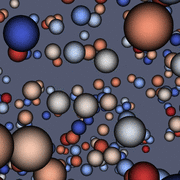


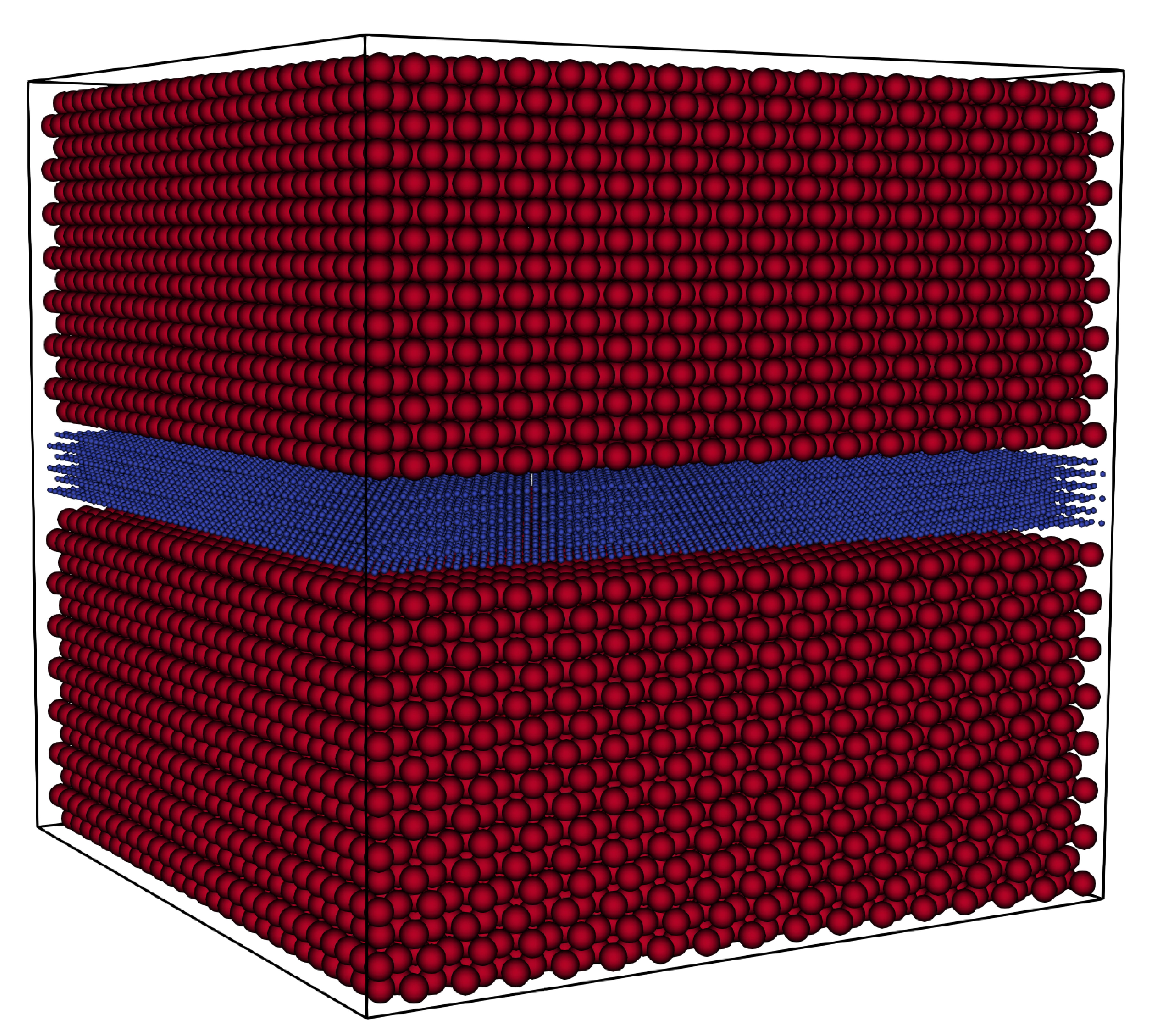
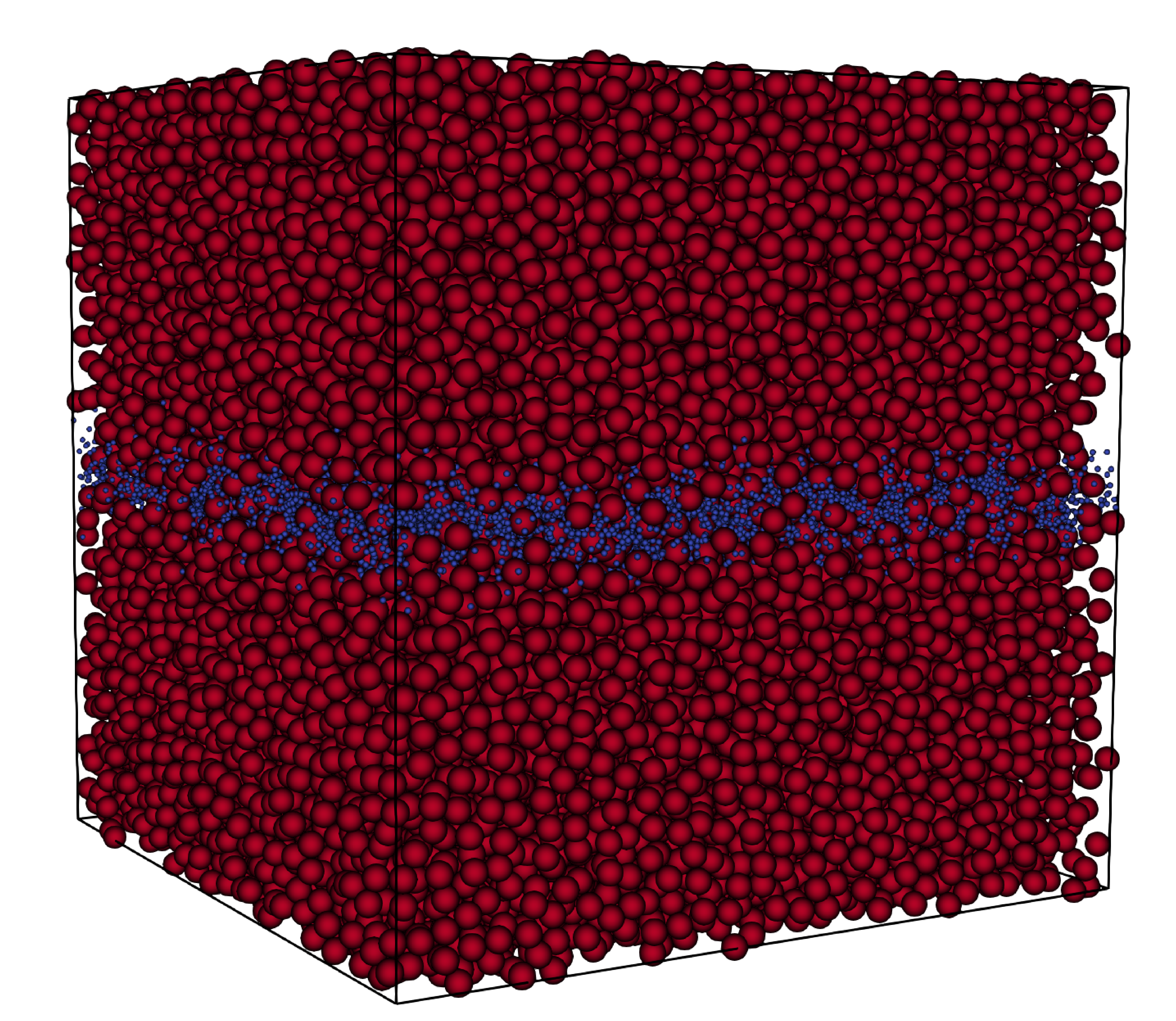
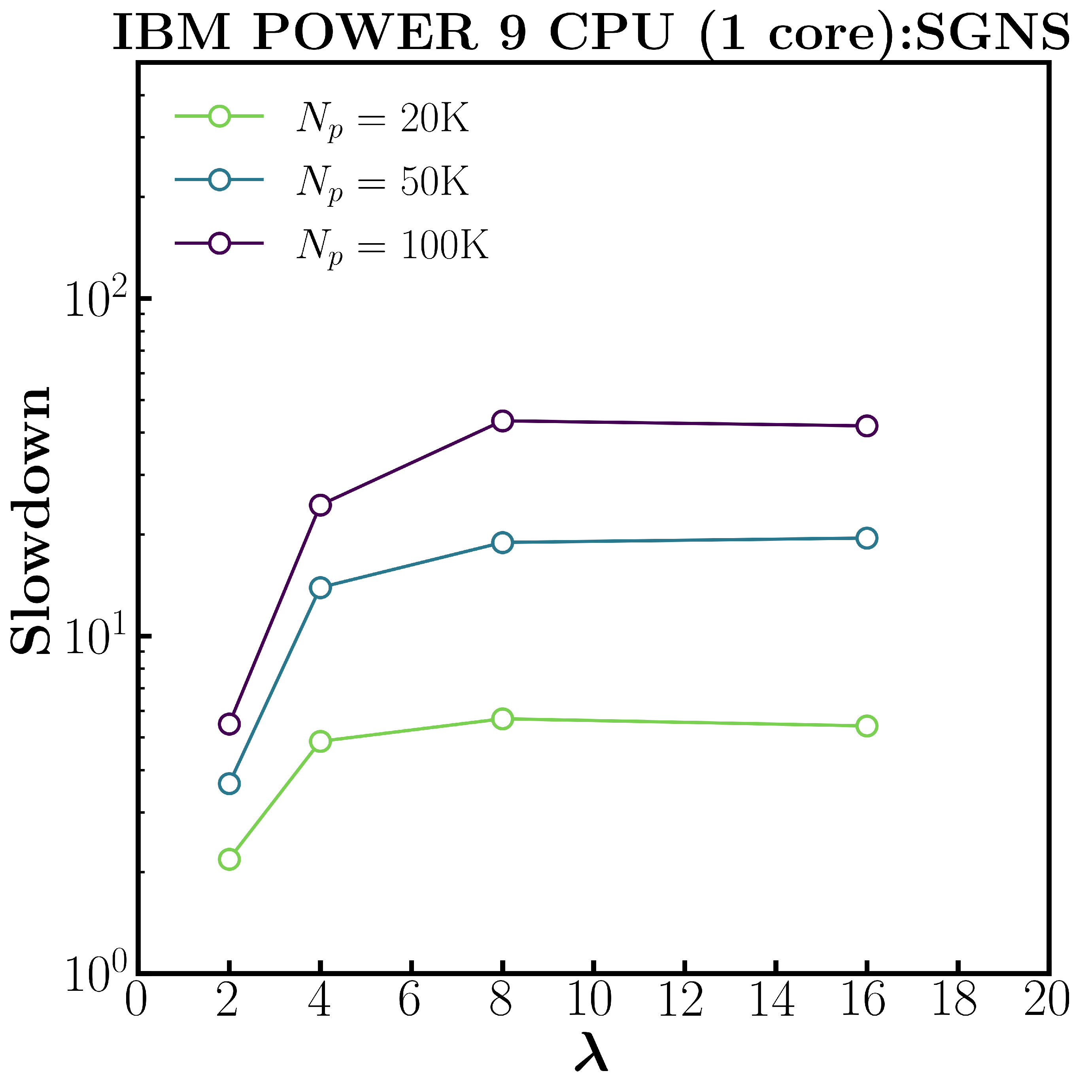
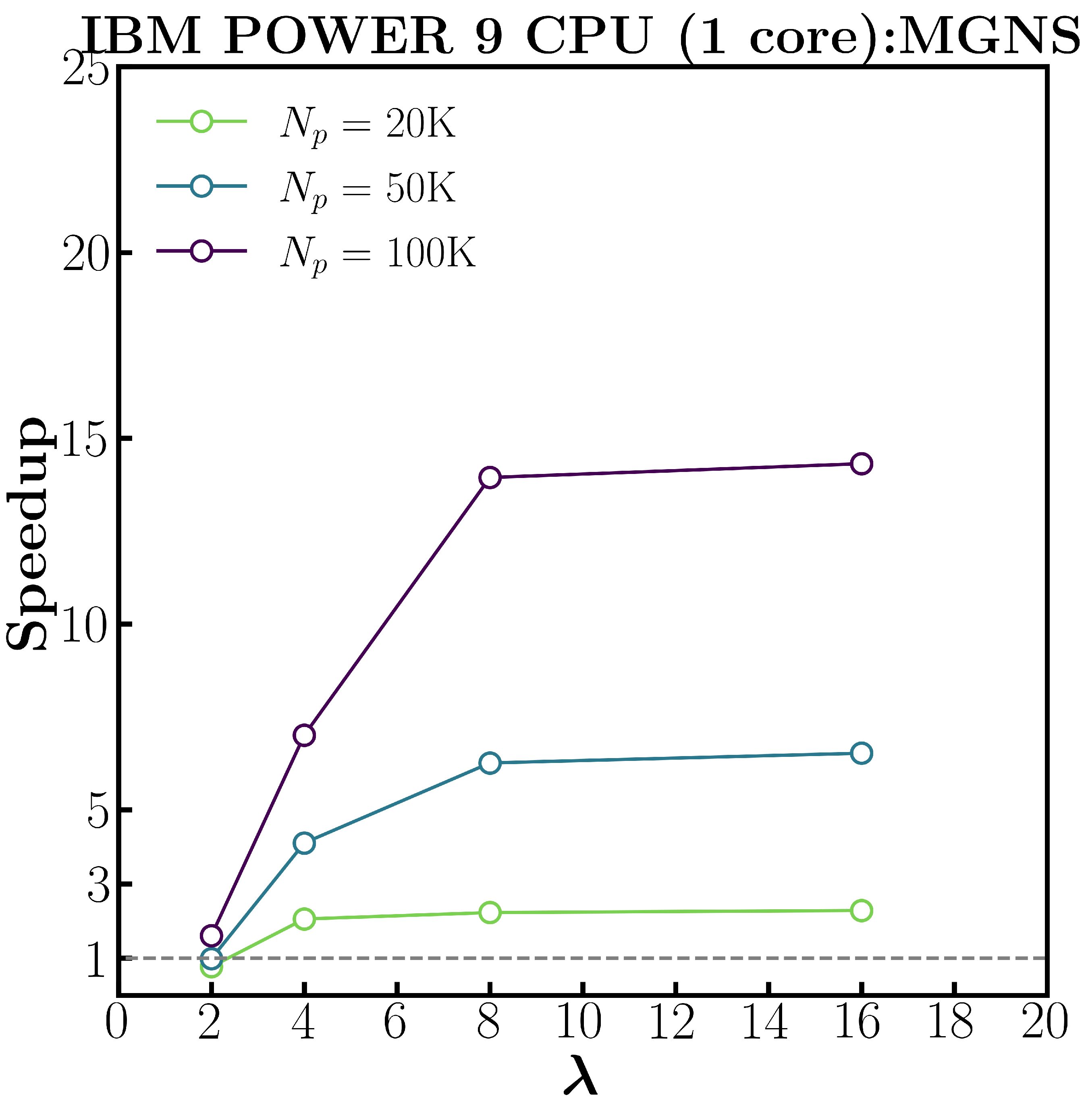




 H. T. Jung, H. Kim, A. L. Garcia, A. J. Nonaka, J. B. Bell, I. Srivastava, and C. Kim,
Thermodynamically Consistent Incorporation of the Langmuir Adsorption Model into Compressible Fluctuating Hydrodynamics,
submitted for publication, 2025.
H. T. Jung, H. Kim, A. L. Garcia, A. J. Nonaka, J. B. Bell, I. Srivastava, and C. Kim,
Thermodynamically Consistent Incorporation of the Langmuir Adsorption Model into Compressible Fluctuating Hydrodynamics,
submitted for publication, 2025.